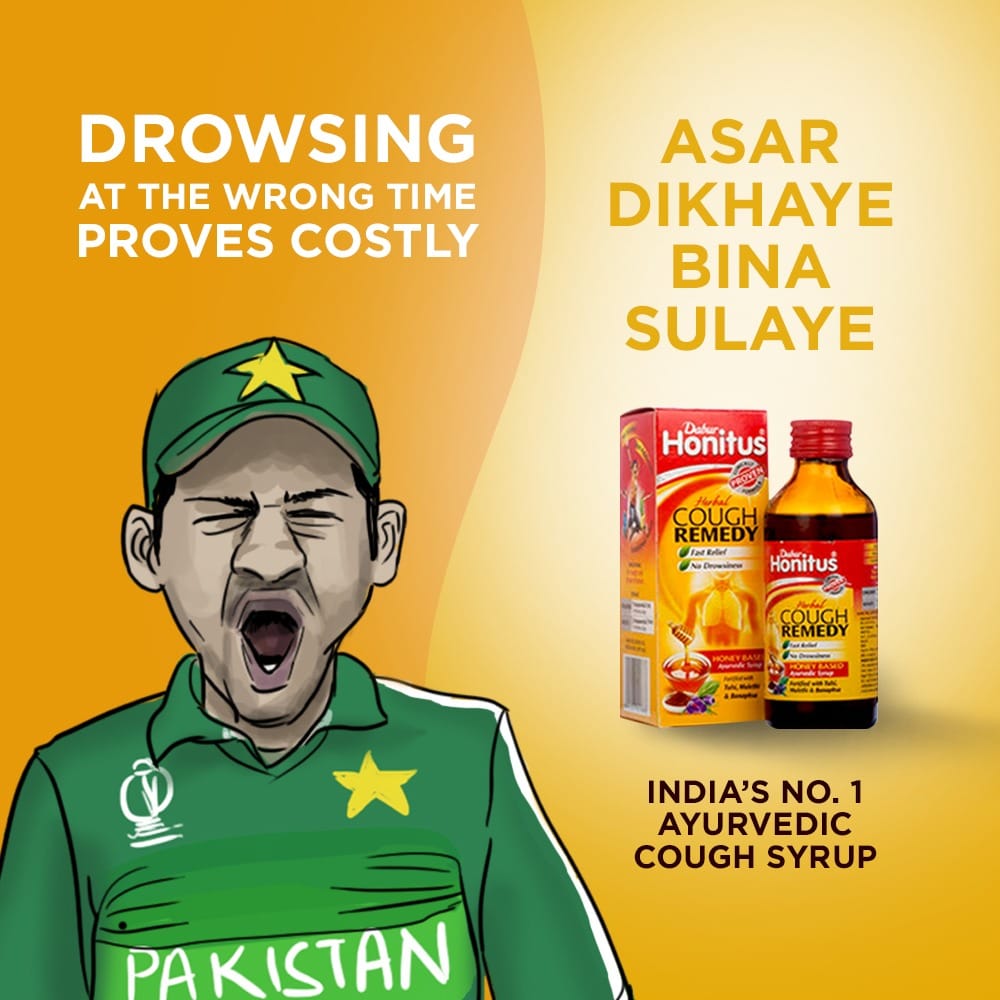Moment Marketing and Momentum

The Indian brands today want to be in touch with the consumer throughout the year and want to see the spike in recall every month. But how does a brand deal with a barrage of trends and news that is happening at a lightning pace in today’s day and age. How can a brand turn such events into its favor and still pass on a relevant message to the consumer that makes them notice the brand? Well, the answer to it is via – Moment Marketing.
The main purpose of any advertising campaign across ATL, BTL and digital is to keep its target audience hooked to the brand in such a way that when the consumer is at the point of sale or transaction, the decision should go in the favor of the brand with the highest recall in the minds of the same consumer. The campaign consists of a central thought around which ad films, posters, and even user-generated content is created. All these assets run on different mediums depending upon the media plan of the brand. But how does a brand deal with a barrage of trends and news that is happening at a lightning pace in today’s day and age. How can a brand turn such events into its favor and still pass on a relevant message to the consumer that makes them notice the brand? Well, the answer to it is via – Moment Marketing.
For instance, let us take the retirement of Yuvraj Singh, former Indian cricketer. It was big news that no brand could have planned for. It happened very suddenly and millions of people took to different social media platforms to express their gratitude and thank for his contributions to the game. Now, every brand would have wanted to be a part of that conversation. However, a lot of brands gave it a good shot but some of them took the conversation to a completely new level such as Zomato, Fevicol, and Indigo Airlines. These brands released creatives on social media platforms that immersed well into the ongoing discussion around Singh and caught the pulse of the netizens. These creatives were widely shared by the audiences giving a good shareability effect and presence in the minds of people. The brands actually added to the ongoing positive conversation around Yuvraj Singh.



Now, this phenomenon is called Moment Marketing. If we look at the definition on Google, Moment Marketing refers to creating relevant and consistent connections between offline and online media in real time. The key to really “being there” when a customer reacts to a TV ad, sports event, or even a change in the weather is the ability to link offline media with search intent.
The definition clearly states that establishing a connection between the offline and online media. In the latest development, let us analyse what Dabur, a renowned FMCG brand, recently did for its cough syrup brand Honitus.

During the India Pakistan bout at Manchester on June 16, Sarfaraz Ahmed, the captain of Pakistan team yawned in the field. The brand team picked up the moment and created a meme around it ‘Drowsing at the Wrong Time Proves Costly’. The punch line went very well with the brand tag line ‘Asar Dikhaye Bina Sulaye’. The creative was released on Facebook and till date has received over 475 comments and 3.8k+ shares on Dabur’s brand page on Facebook. The post was further taken to different mediums by audiences and was shared widely.

Ajay Singh Parihar, Head of Marketing, Healthcare OTC, Dabur India says, “We picked up the moment from the match and realized that it could be relevant to the brand Honitus which aims to provide a remedy from the cough without actually making the consumer feel drowsy. The core of the communication was to differentiate the brand from other such products in the market that makes consumer feel drowsy and extend our sympathies to Sarfaraz Ahmed who felt drowsy at an important event like this, which could cost a lot to their team.”
Identifying a Moment
In the current day and age, it has become much simpler to find out what people are really talking about and what they are sharing. People have to simply log on to social media platforms and could find out what is trending in the news around sports, politics, entertainment, and other such mediums. However, till a few years back it was not that easy because the word-of-mouth only spread for bigger events and for all other small events, people would have to wait for next day’s newspaper or the television news. However, not every trending topic was covered to that extent in these news platforms.

Karthik Srinivasan, Independent Brand Consultant mentions that in today’s day and age there are two kinds of moments – engineered and organic. “A world cup match between India vs Pakistan, an episode of Game of Thrones, Father’s Day falls in the category of engineered moments. People know the time and date of these moments and are sure that these subjects will trend. However, subjects such as Yuvraj Singh, Dancing Uncle, JCB Ki Khudaai, are organic moments and people have no idea of when they would happen,” shares Srinivasan.
For instance, Manforce, a popular condom brand, harped on a moment when a popular news anchor during Lok Sabha 2019 Election Results called upon Bharatiya Janata Party MP Sunny Deol as Sunny Leone. The brand picked up the idea as the latter is their brand ambassador and released a pun intended creative that went to catch the attention of the netizens.

Parihar points that most of the times knowledge of the what is a moment comes from trending topics and gut feelings. “We regularly keep checking the social media platforms to identify what is trending.”

Karan Kumar, Chief Brand & Marketing Officer, Fabindia says, “The idea is to create messages that are relevant to the audiences in that mood of the day, in event of the narrative. All of this is very contextual and originating in real time.”
Relevant Message
Amul, a dairy brand, has championed the art of Moment Marketing for decades. The polka dotted Amul girl has been talking to the Indian audiences on several newsy topics for decades. The brand has a dedicated space in the print media, billboards and shares creatives online to connect with the audiences. DaCunha Communications have championed the process of creating and releasing topical creatives for decades now and have created an iconic Amul brand. Their messages are pun intended while keeping the brand philosophy of Amul intact.

In a recent instance, Hajmola, a candy brand from the house of Dabur India, launched a creative around #JCBKiKhudaai. The creative showcased graphs representing the interest level of Indian audiences around key subjects such as India vs Pakistan World Cup match, JCB and Election Results. It pointed to the fact that JCB had garnered highest interest levels and shared with the Hajmola’s brand message #BaatHajamNahiHui.

Parihar explains that the message should excite consumers and they should feel that they were thinking the same thing. “With the #JCBKiKhudaai and Hajmola creative, we wanted to bring out the brand positioning of Hajmola. We wanted to go beyond the digestion part as consumers also buy Hajmola as a candy. We were looking at a fresh perspective and this idea was more contextual in nature but it was very relevant to what people were thinking about the trend,” adds Parihar.
Why & How Brands Do It?
Every brand wants to stay relevant to its consumer and continuously be in touch with them. Srinivasan shares that ideally most of the brands go for a big ATL burst twice a year. “However, today, the brand wants to be in touch with the consumer throughout the year and wants to see the spike in recall every month. In most cases, it is not possible to run ATL campaigns throughout the year, hence it takes the route of creating a regular stream of contextual and relevant content that keeps the audiences engaged and keeps the recall needle moving, which is actually better than being missing for a larger part of the year,” shares Srinivasan.


There is no doubt that planning and executing a creative around a moment is simpler, quicker and cost effective. Parihar explains that when he or his team identifies a moment they ensure that it is cleared with least deliberations such that the same can be passed to the agency for creation. “It is important to be timely in this form of marketing because the shelf life of a news cycle is extremely small in today’s time. If you are able to bring out within that span of time, the chance of it working are more. So, there is no point of taking it through layers of approvals,” shares Parihar.
He further explains that many a times, his teams also let the opportunity pass because they feel it is too cluttered and it is not delving perfectly in the brand message. “Our focus is not on creating 10 sub-optimal creatives of which 9 do not work. It does not create a strong imagery of the brand. However, it is necessary to do one creative but with the right message and thought. While the agency is always pressed for time, the creativity gets affected,” mentions Parihar.

Nakul Kumar, Co-Founder, Cashify points that Moment Marketing is a way how a brand is talking to the consumer and relating to it. “Gone are those days when a brand can think I am big and the consumer has to follow the way I think, today, the brand has to follow the consumer wherever he/she is and has to be a relevant part of the conversation in his/her day-to-day life,” shares Kumar.
Does it Sell?
The idea behind an advertising campaign is to create a window for the brand to create the transaction. With Moment Marketing, the key idea is not to sell but to ensure that the brand saliency continues and the consumer remembers it as an active brand.
Srinivasan mentions that you cannot attribute Moment Marketing to sales or footfalls. “It will be a tough ask. The purpose should be to share it and have fun for a moment. These are organic trends, one cannot promote. It is difficult to say that a consumer saw a particular creative and as a result he/she remembered the brand and hence made the purchase.
Kumar adds that there is no specific answer to it. “Whichever brand is better, whose idea is good, planning and strategy is good, will sail over others. It will generate the buzz, connect with the audiences and the more beautifully it dovetails into the narrative of the ongoing discussion the better chance it has to create a transaction, impact and salience. It can be at a point outside a mall, while travelling, binging your favorite show and checking twitter at once and others. Again, the better suited you are in to the ongoing narrative of the occasion, the better results it generates,” adds Kumar.
A lot of brand have now taken to Moment Marketing across categories. Interestingly, most of the moments when brands are expected to release creatives are common and predictable. Hence, they share the creative around the common theme tweaked with their brand message. Now, this means that several brands sharing the same thought with their brand message. This creates some bit of clutter in the market around that moment.
Kumar mentions that there will be clutter. “No doubts about that. There are many brands who will utilize the opportunity and it is true that it creates clutter, but that happens all the time. For example, take Diwali, a normal newspaper becomes a 100-page booklet then with now multiple brands advertising but the one with relevant copy, strategic communication and right input sail over the others. Clutter is inevitable,” adds Kumar.














